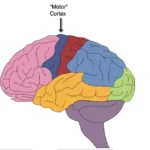
In the field of psychology, two distinct approaches have emerged, each with its unique focus and methodology.
Positive psychology and traditional psychology offer different perspectives on understanding human behavior and mental processes.
In this article, we will explore the key differences between these two branches of psychology, their characteristics, and examples of their applications.
What is Positive Psychology?
Positive psychology represents a contemporary field of inquiry centered on exploring the strengths and virtues that empower individuals and communities to thrive.
In contrast to traditional psychology, which frequently delves into pathology and dysfunction, positive psychology seeks to unravel the factors contributing to people’s flourishing and fulfillment in life.
This approach takes a holistic perspective, emphasizing happiness and well-being over a narrow focus on mental illness.
Essentially, positive psychology directs its attention towards understanding the elements that lead to a thriving and fulfilling existence.

Characteristics of Positive Psychology
Positive psychology is characterized by its focus on:
Emphasis on well-being
In contrast to traditional psychology, which places a significant focus on identifying and addressing dysfunction, positive psychology shifts its attention towards promoting well-being and flourishing.
It seeks to understand the factors that contribute to a fulfilling and thriving life.
Positive perspective
Positive psychology adopts a positive perspective, encouraging researchers and practitioners to explore the strengths and virtues that enhance the human experience, rather than solely concentrating on what goes wrong in the mind.
Holistic approaches
Unlike traditional psychology’s heavy reliance on clinical interventions, positive psychology explores a range of holistic approaches to foster well-being.
These can include activities that promote positive emotions, social connections, and personal strengths.
Enhancement of life satisfaction
The primary goal of positive psychology is not just symptom reduction but the enhancement of life satisfaction.
It aims to elevate individuals beyond a baseline state of mental health, focusing on the cultivation of positive emotions and the development of individual strengths for a more fulfilling life.
Examples of Positive Psychology
Positive psychology interventions encompass various practices geared towards enhancing well-being and fostering positive mental states.
Examples of these interventions include:
- Mindfulness meditation
- Gratitude exercises
- Strengths-based therapy.
The overarching goal of these approaches is to contribute to the promotion of well-being by nurturing positive aspects of individuals’ mental and emotional experiences.
What is Traditional Psychology?
Traditional psychology primarily concentrates on identifying and treating psychological disorders to alleviate symptoms.
It adopts a problem-solving approach, emphasizing the diagnosis and management of mental illness and dysfunction.
Unlike positive psychology, which promotes well-being and explores strengths, traditional psychology tends to focus more on pathology and symptom reduction.

Characteristics of Traditional Psychology
Traditional psychology typically focuses on:
Emphasis on dysfunction
Traditional psychology places a significant focus on identifying and addressing dysfunction, mental illnesses, and psychological disorders.
Its main objective is to diagnose and treat conditions such as depression, anxiety, schizophrenia, and bipolar disorder.
Pathological perspective
Often adopting a pathological perspective, researchers and practitioners in traditional psychology study what goes wrong in the human mind and how to alleviate suffering or dysfunction.
Clinical interventions
Traditional psychology relies heavily on clinical interventions, employing methods such as psychotherapy and medications to manage and treat mental health issues.
Symptom reduction
The primary goal of traditional psychology is to reduce or eliminate symptoms and distress, with the ultimate aim of restoring individuals to a baseline state of mental health.
Examples of Traditional Psychology
Traditional psychology is actively engaged in diagnosing and treating a spectrum of mental health conditions, including but not limited to:
- Depression
- Anxiety
- Schizophrenia.
To address these psychological disorders, it employs therapeutic approaches such as cognitive-behavioral therapy, psychoanalysis, and behavioral interventions.
The primary focus of traditional psychology is on employing well-established methods to understand, manage, and alleviate various mental health challenges individuals may face.
Key Differences: Positive Psychology vs. Traditional Psychology

| Aspect | Positive Psychology |
Traditional Psychology
|
| Focus | Emphasizes strengths, virtues, and well-being |
Addresses psychological disorders and symptoms
|
| Approach | Holistic, focused on happiness and thriving |
Problem-oriented, focused on pathology and dysfunction
|
| Interventions | Mindfulness, gratitude exercises, strengths-based therapy |
Cognitive-behavioral therapy, psychoanalysis, behavioral interventions
|
Conclusion
Positive psychology and traditional psychology present unique perspectives on comprehending human behavior and mental processes.
Positive psychology directs its attention towards strengths, virtues, and well-being, with the overarching goal of assisting individuals in thriving and leading fulfilling lives.
Conversely, traditional psychology centers its focus on managing psychological disorders and minimizing symptoms, employing problem-oriented approaches to address pathology and dysfunction.
These two approaches, while distinct, contribute to a comprehensive understanding of the multifaceted nature of human psychology.


